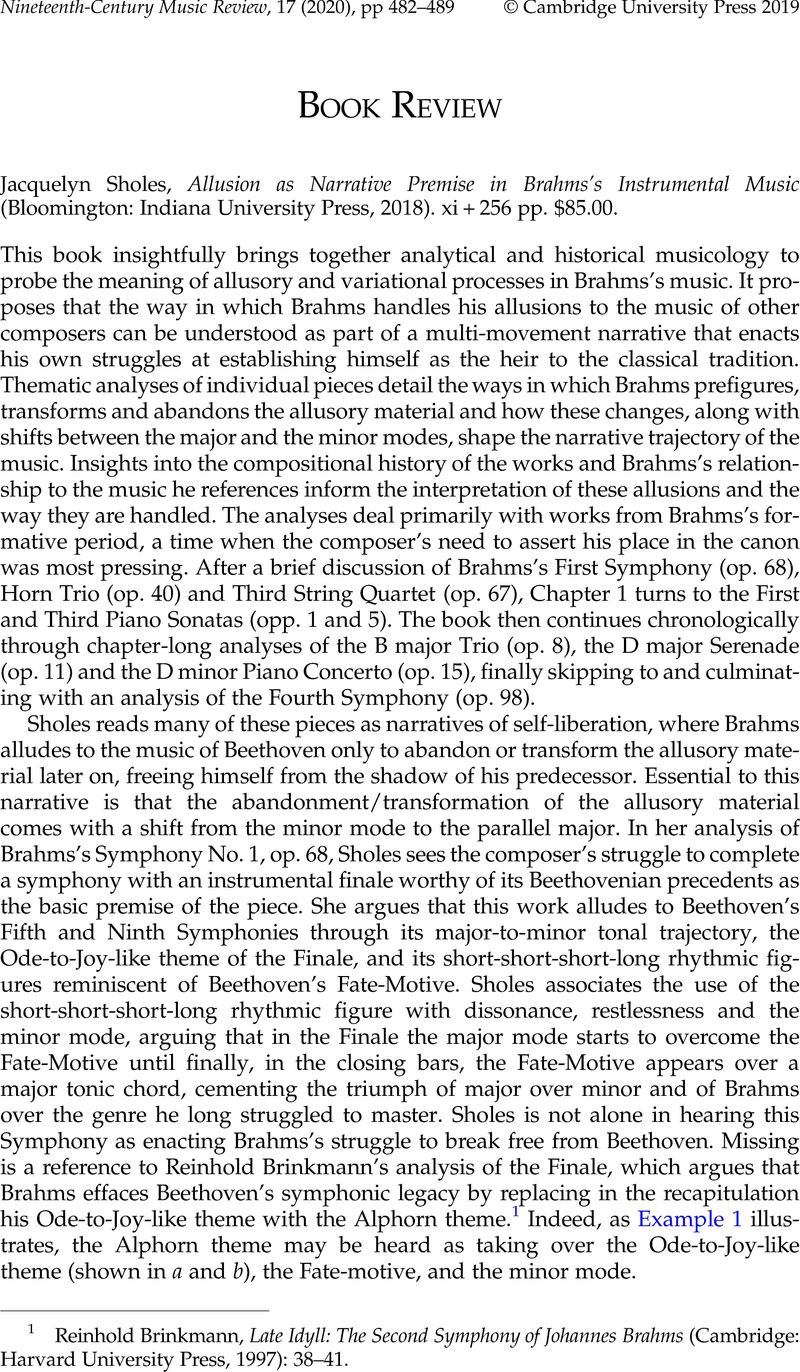No CrossRef data available.
Article contents
Jacquelyn Sholes, Allusion as Narrative Premise in Brahms's Instrumental Music (Bloomington: Indiana University Press, 2018). xi + 256 pp. $85.00.
Review products
Published online by Cambridge University Press: 14 November 2019
Abstract

- Type
- Book Reviews
- Information
- Nineteenth-Century Music Review , Volume 17 , Special Issue 3: The Experience of Listening to Music in the Nineteenth Century , December 2020 , pp. 482 - 489
- Copyright
- Copyright © Cambridge University Press 2019
References
1 Brinkmann, Reinhold, Late Idyll: The Second Symphony of Johannes Brahms (Cambridge: Harvard University Press, 1997): 38–41Google Scholar.
2 Raymond Monelle has argued that this rhythmic figure ‘seems to have been an instrumental imitation of a roll in the drum’. Monelle, Raymond, The Sense of Music: Semiotic Essays (Princeton: Princeton University Press, 2000): 43Google Scholar.
3 Monelle, Raymond, The Musical Topic: Hunt, Military and Pastoral (Bloomington: Indiana University Press, 2006): 271Google Scholar.
4 Hepokoski, James and Darcy, Warren, Elements of Sonata Theory: Norms, Types, and Deformations in the Late Eighteenth-Century Sonata (New York: Oxford University Press, 2006): 170–77CrossRefGoogle Scholar. The trimodular organization of this movement's soloist exposition is discussed in Hepokoski, James, ‘Monumentality and Formal Process in the First Movement of Brahms's Piano Concerto No. 1 in D minor, Op. 15’, in Expressive Intersections in Brahms, Essays in Analysis and Meaning, ed. Smith, Peter H. and Platt, Heather A. (Bloomington: Indiana University Press, 2012): 217–51Google Scholar.




